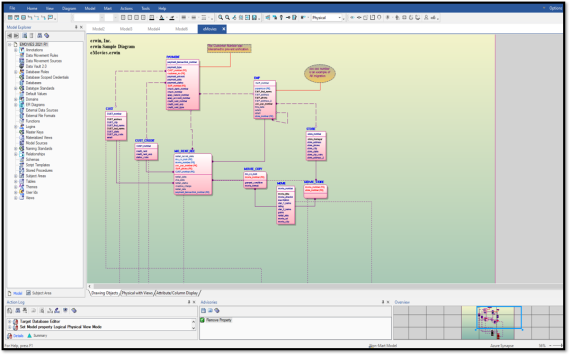Data Modeling Tools

What is a data model?
A data model is a visual representation of data elements and the relationships between them. Data models help business and technical resources collaborate in the design of information systems and the databases that power them. They show what data is required and how it needs to be structured to support various business processes.
There are three basic types of data models, each with a specific purpose:
- Conceptual Data Models: High-level, static business structures and concepts
- Logical Data Models: Entity types, data attributes and relationships between entities
- Physical Data Models: The internal schema database design
What is data modeling?
Data modeling is the process of creating a data model to communicate data requirements, documenting data structures and entity types. It serves as a visual guide in designing and deploying databases with high-quality data sources as part of application development.
Data modeling has been used for decades to help organizations define and categorize their data, establishing standards and rules so it can be consumed and then used by information systems. Today, data modeling provides even greater value because critical data exists in both structured and unstructured formats and lives both on-premises and in the cloud. So it’s a cost-effective and efficient way to manage and govern massive volumes of data, aligning data assets with the business functions they serve. You can automatically generate data models and database designs to increase efficiency and reduce errors to make the lives of your data modelers – and other stakeholders – much more productive.
Benefits of data modeling
Data modeling tools have proved that if you take the time and make the investment upfront, you avoid the pain of costly mistakes further along in the development process. So the data model is a low-risk, low-cost capability that supports many use cases, including:
- Database design and deployment with schema maintenance
- Master data management design and data integration
- Metadata management
- Analytics/business intelligence design and data source analysis
- Data warehouse and data lake design/documentation
- Big Data adoption
- DBMS rationalization and migration
- Data governance
- Data intelligence
Why erwin’s data modeling software?
erwin pioneered data modeling and has been working with the world’s largest enterprises for more than 30 years to help them realize its advantages. erwin Data Modeler by Quest remains the most trusted software for data modeling and database design, automating complex and time-consuming tasks related to data source discovery, design, documentation, standardization and deployment.
We’ve developed what we believe to be the best data modeling solution with several versions to meet customer needs, ensuring all our functionality, workflows and support help the professional data modeler produce the desired business outcomes. With erwin Data Modeler, you have a single solution for all your enterprise data modeling and database design needs, enabling you to model any data from anywhere to:
-
Visualize business and technical database structures in an integrated model rich in metadata.
-
Standardize and reuse core definitions and data structures across projects with the data model and associated metadata stored in a central repository.
-
Store business definitions and data-centric business rules in the model along with technical database schemas, procedures and other information.
-
Extract and convert data from ERP, CRM and other enterprise applications.
-
Rationalize platform inconsistencies and deliver a single source of truth for all enterprise business data.
-
Give business users confidence in the information they use to make decisions.
Additionally, erwin Data Modeler is part of the larger erwin EDGE platform that integrates enterprise architecture and business process modeling with data catalog and data literacy capabilities.
